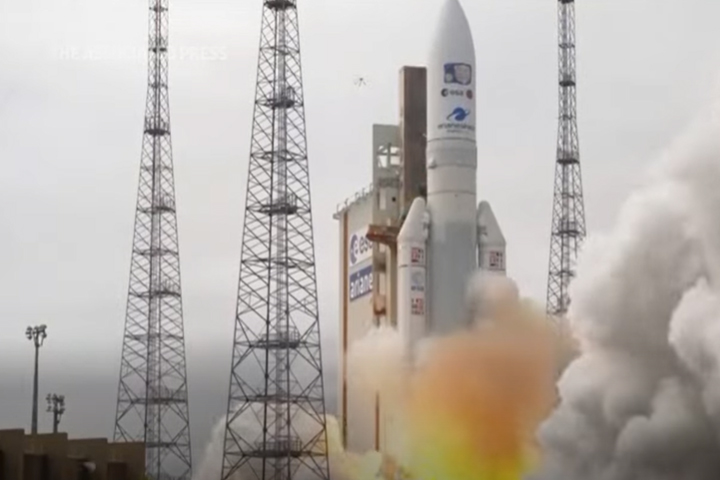


A European spacecraft launched Friday on a decade-long mission to examine Jupiter and three of its frozen moons, which may contain submerged seas.
The voyage began with a flawless morning launch of Europe's Ariane rocket from French Guiana on the South American coast. However, there were some anxious moments later as controllers awaited indications from the spaceship.
When communication was ultimately made near the end of the trip, Mission Control in Germany stated, "The spacecraft is alive!”
The Juice robotic explorer will take eight years to reach Jupiter, where it will examine not only the solar system's largest planet, but also Europa, Callisto, and Ganymede. The three ice-encrusted moons are thought to have subsurface seas with aquatic life.
Then, probably most impressively, Juice will attempt to circle Ganymede: no spacecraft has ever orbited a moon other than our own.
With 95 moons, astronomers consider Jupiter to be a tiny solar system in its own right, with missions like Juice long overdue.
“This is a mission that is answering questions of science that are burning to all of us,” said European Space Agency’s director general, Josef Aschbacher after the launch. “Of course, one of these questions is: Is there life out there?”
It can’t find life, “but Juice will be identifying the habitability of these icy moons around Jupiter,” he added.
The spacecraft is traveling 4 billion miles (6.6 billion kilometers) round-trip to Jupiter.
It will fly within 125 miles (200 kilometers) of Callisto and 250 miles (400 kilometers) of Europa and Ganymede while orbiting Jupiter, conducting 35 flybys. The spacecraft will then slow down to circle Ganymede, the primary goal of the 1.6 billion-euro (almost $1.8 billion) project.
Ganymede is not just the solar system's biggest moon—it dwarfs Mercury in size—but it also has its own magnetic field, complete with brilliant auroras at the poles.